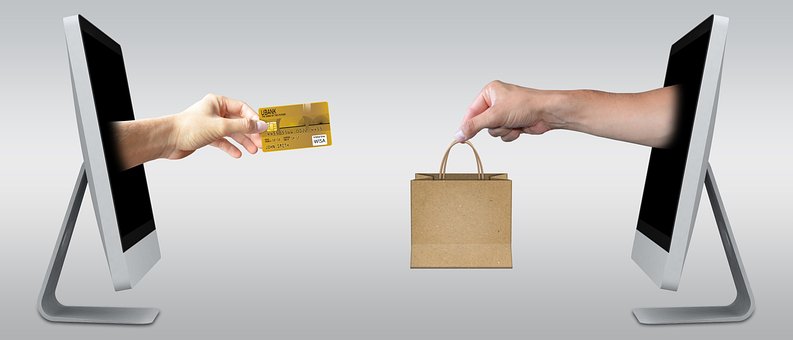
Following on in our series of ‘10 ways to make money with….,’ where the last one was all about how to monetise using Instagram, this article is all about ways to make money using Shopify.
The global e-commerce market recorded a historical growth (CAGR) of 15% from 2017 to 20 and grew 14% in 2021, reaching $5,496,163.90 million. Meanwhile, online retail sales are predicted to reach $6.51 trillion in 2023 with e-commerce websites taking up 22.3% of all retail sales.
With over 4.5 million e-commerce sites and generated over $650 billion in sales during its 17 years of operation, including total revenue of $5.6 billion in 2022, Shopify is now one of the largest e-commerce platforms in the world. Suffice it to say that plenty of people are running successful, profitable businesses using the platform.
How profitable is it to sell on Shopify? As with any business, the answer to that completely depends on the individuals involved and the business model. The benefits that Shopify offers are low entry costs (including an initial three-month free trial), and all the key features that can be costly in setting up your own website, especially if you want an e-commerce component. They make it easy and simple to get going and keep digital operations costs as low as they’re likely to be – in terms of profitability, that’s up to you!
So, can you make good money on Shopify? At least 4.5 million are, so why not you?
1. Create a Shopify store to make money on Shopify
First things first, you can’t win the lottery if you don’t buy a ticket, or in this instance, you can’t start making money with Shopify if you’re not using it. Setting up an e-commerce store is the first step to making money. Shopify is popular because it’s got lots of different options, so you can customise its appearance but it has easy, inbuilt features to get you selling asap, including an unlimited product catalogue, built-in fraud analysis, manual order creation, discount codes, abandoned cart recovery, analytics, and finance reports. Can you make good money on Shopify? The world’s your oyster. How much profit does Shopify take in commission? It depends on which plan you’re on – for example:
- The Basic Shopify Plan takes 2.9% + 30 cents per transaction
- The Shopify Plan takes 2.6% + 30 cents per transaction
- The Advanced Shopify Plan takes 2.4% + 30 cents per transaction
Just remember to factor that into your business plans and pricing models.
2. Sell digital products and downloads
The next step to making money on Shopify is deciding what you’re going to sell. One option is digital products and downloads – that could be ebooks, podcasts, apps, themes, or NFTs. If you’re a specialist in any one of those areas then you’re already ahead of the game. If you’re not an expert, then consider what you need to invest in before setting up your store and getting your concept to market. Shopify helps thanks to seamless integrations with third-party tools and apps, its capacity for creating an eye-catching store quickly, and thanks to its built-in SEO tools to drive site traffic.
3. Sell physical products
You can also sell physical products through your Shopify site and this is probably the most popular use for the platform. It will require some slightly different considerations for digital products, depending on whether you’re manufacturing products, buying them from elsewhere, storing them, and whether you’re responsible for shipping etc. You might start your own clothing line like Bethan Kershaw from Geordie Shore, and sell vintage items – anything you fancy. The best thing to do however is to build on something you know, whether it’s a personal passion or simply something you have built a lot of knowledge about.
What are the most profitable products on Shopify? Trending products in 2023 definitely gravitate towards the physical, with the top 10 featured including:
- Power tool accessories
- Dog toys
- Costume shoes
- Laptop batteries
- Shot glasses
- Slipcovers
- Wall plates and covers
- Baby shirts
- Curtain and drape rings
- Cabinet knobs and handles
As with digital products, just make sure you factor in the set-up costs and Shopify’s commission when working out your business plan. If you’re not sure how to do that, I can always help through my private business coaching service.
4. Become a Shopify affiliate marketer
Affiliate marketing can be done across lots of different platforms and in lots of different ways. For those who don’t fancy running their own store or those who want to supplement their business income with an additional revenue stream, you can join the Shopify Affiliate Program. It’s for content creators, educators, influencers, and individuals who want to inspire audiences to set up their businesses with Shopify. It works on a commission basis – when your audience registers a paid Shopify business plan, you get paid too. Get creating!
5. Build a Shopify dropshipping business
Another way of making money on Shopify is to create a dropshipping business. This is when you run a store without holding inventory – in essence, items are made on demand and shipped from the manufacturer. Easy things to do that with, for example, might be creating beautiful prints if you’re a great photographer. The great benefit of dropshipping is that it avoids the storage challenges and shipping logistics of manufacturing your own physical products. How much can you earn dropshipping on Shopify? As much as you want really! A quick search on Google estimates that Shopify dropshipping stores can earn anything from $100 to $100,000 or more per month.
6. Sell freelance services
It’s not just products that can be sold on Shopify – it’s also a platform that you can use to sell services, including freelance skills. With its inbuilt payment systems freelance writers, designers, photographers, illustrators and so forth can use the platform to market and sell their skills. Freelancing is such a big part of working in a digital world, why not maximise your exposure with a professional-looking site to help customers find you?
7. Monetise your social media to make money with Shopify
Monetising social media is a popular way for people to make money as either a primary or secondary source of income in lots of different ways. However, specifically relating to your Shopify store, their starting plan has a focus on social selling. It allows you to add ‘buy now’ links to your Facebook and Instagram posts, making it easier to reach new shoppers and make additional sales. The clever bit is that customers can then place orders for items or services directly through social media sites like Instagram and Facebook, reducing barriers to sales and boosting relationships with customers at the same time.
8. Create a blog to drive more sales on your Shopify store
No online business will make money without driving traffic to the site. To drive traffic you need great SEO that you’re continuously contributing to. Part of contributing to your site’s SEO is creating great content and the best way to do that is on a blog. Shopify enables you to create a blog within your site to bring more organic traffic in your direction. They have a dedicated SEO guide to help you along the way, and in addition, it’s structured so you can use their various apps to further increase sales at the same time.
9. Be strategic with pricing to make money with Shopify
Pricing is an emotive subject for people – it’s not just about the literal number on the level and whether someone can afford it, but it’s also an indicator of quality, value, and sometimes even status. Basically, that means you need to think about it carefully. According to McKinsey & Company, businesses should use a wide range of factors to determine price sensitivity, such as taking the target market, competitors, and wider company considerations into account. Put simply, don’t simply wack a price tag on your products and services – do your market research first, because lots of sales and customers that keep coming back is better than one big sale. If you want to make money, remember that pricing isn’t just about every individual sale but your overall strategy for driving sustainable and cumulative revenue.
10. Plan your shipping and logistics carefully
If you’re selling physical items, either those that you store yourself or those that are drop shipped, the logistics of shipping are an essential part of making money. That ranges from how good your customer experience is to how much profit is taken up by shipping costs, how often items get damaged in transit and need replacing, or whether you can make a little extra margin between what you’re being charged by the courier and what you’re charging the customer. Perhaps you charge for post and packaging, perhaps you don’t, or perhaps it’s built into the product cost as part of your business model. To make your Shopify business profitable, you have to think seriously about shipping and logistics. Key things to be aware of:
- Focus on removing as much friction as possible
- Research price options with couriers carefully and stay on top of costs going forwards
- Don’t just make it about cost – think about shipping speed estimates
- Research relevant taxes (especially if you’re shipping overseas, so you don’t get caught out with a nasty bill)
- Also if you’re planning to ship overseas, remember to check whether your chosen courier operates in that area
In short, for those considering setting up an e-commerce business, Shopify is a great way to go. Lots of companies start there, and there are plenty of big businesses that have continued to grow within the platform, such as Gymshark, Absolute Collagen, Kylie Cosmetics and Fitbit.
Want to start your next e-commerce business but not sure where to start? By hiring me as a business consultant you get the benefit of guidance, expert advice and strategic input from my team and I. Contact me to discuss your ideas.





